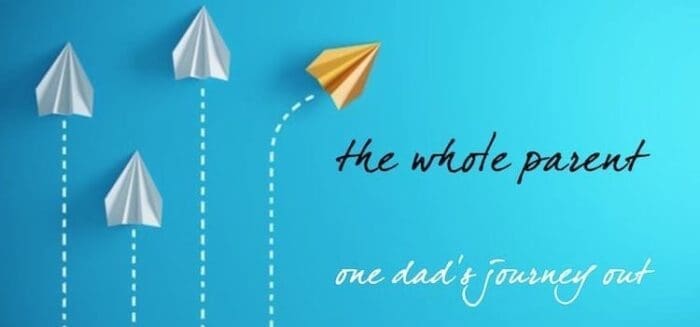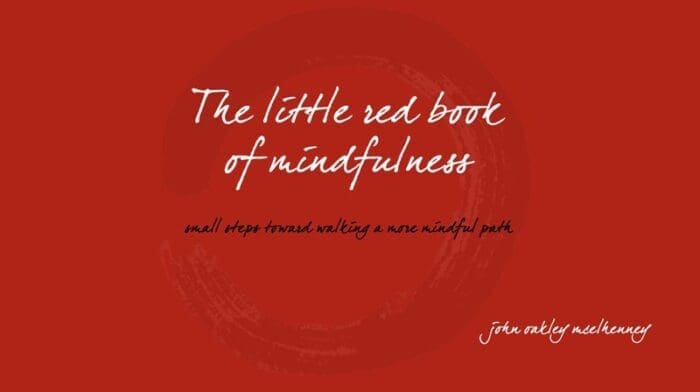Mindfulness is not hard to understand.
Understanding mindfulness is not mindfulness.
Practicing mindfulness in your daily life is a process, a habit, that once you embrace and understand can make significant improvements in your quality of life and even your health.
My understanding of this essential duality of mind (consciousness) came at an early age in the unexpected form of a tennis book. The Inner Game of Tennis seemed like an ordinary tennis book to me, at 10, but it was really a book about the duality of our minds. Here’s how that mindful lesson went.
Self 1: critical, analyzing, trying very hard to hit the proper topspin forehand, racket back, racket low, finish high, watch the ball, etc.
Self 2: knows how to hit a perfect topspin forehand, but we must override self 1 and just feel the shot, feel the ball, see the ball, and where we want it to go.
Meta-Mind Thinking
Most of us are stuck in self 1. We’ve got to-do lists, and we’ve got complaints about life, about our work, about our relationships. The past and the future weigh a bit too heavily on our present. So we’re frustrated, in a hurry, often late and distracted, even when the activity is something we really want to enjoy. Here’s how self 2 comes in.
All of this worry and strife is keeping you from the peace you deserve. Here’s one approach to detaching from the “issues” and becoming more present in the moment. When things are feeling overwhelming or out of control, one strategy is to go “meta” or “above” it. I will visualize myself as a ghost floating near the ceiling looking down on myself and the events that are unfolding, the mood that I’m wrestling with, or even the conversation I’m in with a partner where we are disagreeing on some fundamental topic.
Here’s how I put the observer process into action:
- Pause when you notice moodiness or overwhelm
- Observe the action and feelings (Ghost on the ceiling)
- Label the mood or idea and detach yourself from the outcome
- Let go of the offending emotion “just a feeling”
- Decide what is the “next right action” to take
Let me share an example.
I woke up this morning to a text from one of my kids asking for money. I felt anger. I felt sadness. I felt love and care for my kid. And finally, I settled on frustrated and slightly pissed off.
Pause: Okay, I’m a bit consumed by this anger, let me take a time out
Observe: I miss my kids. I feel resentful when they only contact me for money. I can love my kids and be angry with them simultaneously.
Label the mood: I’m angry.
Let it go: I could stay angry, I could send an angry text, I could steep in my sadness about missing my kids.
Next right action: Respond with a loving message to my kid about discussing the money on the phone, when they are available.
At this point, I can let go of the mood and move on with something else. By taking action, I have put this emotional signal to use. The emotional signals in our life are giving us information. Even a bad dream can provide ideas or information about what’s worrying us while we sleep.
Reset Your Mind
This simple process, of observing, labeling, and taking action, can really move you along. Rather than getting stuck in anger or sadness all morning, I was able to observe and label myself in a moment of overwhelm. The transformation happens when you label it. It’s not me, it’s just a thought I’m having. It’s just an emotion and does not necessarily represent the truth, nor does it require a lot of examination. For the most part, emotions, moods, and ideas, go flickering around our minds all the time. When one pops out, give it a little attention.
You will soon learn that your brain is giving you signals and if you process them into action, your brain will be satisfied (at least on that one item) and move on to other thoughts and feelings. And thus, the cycle repeats.
The more efficient you get at processing these blips of emotion or moods, the easier it becomes to live in the space between the incoming brain broadcast: the easier it becomes to remain in the present moment.
Start with labeling. That’s all you have to do. “I’m having a moment of fear related to money.” Okay, “fear.” I can see that I’m really worried about my recent spending on travel. Actually, my cash flow is fine, I’ve just got a bit more credit card debt than I’m happy with. Action: pay off some credit card debt and make plans for a “staycation” at Spring Break this year.
On I go into the rest of my day.
Namasté,
John McElhenney – life coach austin texas
Facebook | Instagram | @wholeparent
Table of Contents
-
observer – pause (ghost on the ceiling + next right actiondone- affirmations – changing your thoughts by prayer and repetition
- energy = mood – lessons in self-awareness and consumption
- defining your scale – 1 (depression) to 10 (manic)
- self-compassion – go easy on yourself during the hard times
- self-soothing – how you nurture and lift yourself back up
- listening with intention – give your attention to someone else’s pain
- up and out – interrupting sadness and loneliness
- defining a path – where do you want to go in your life
- refining your goals – along the journey it is important to reset
- full-stop reset – when everything feels out of balance
- resting in hope – hope is the key to unlocking energy and recovery
related posts:
- mindfulness < a new index of happiness and hope
- MNDFL + MFKR (You can be either, better to be both)
- “You Look Tired” Let’s Talk About Living Your Best Life
- Here and Now: Returning To Peace, Learning Patience
 Now Available from Amazon
Now Available from Amazon




